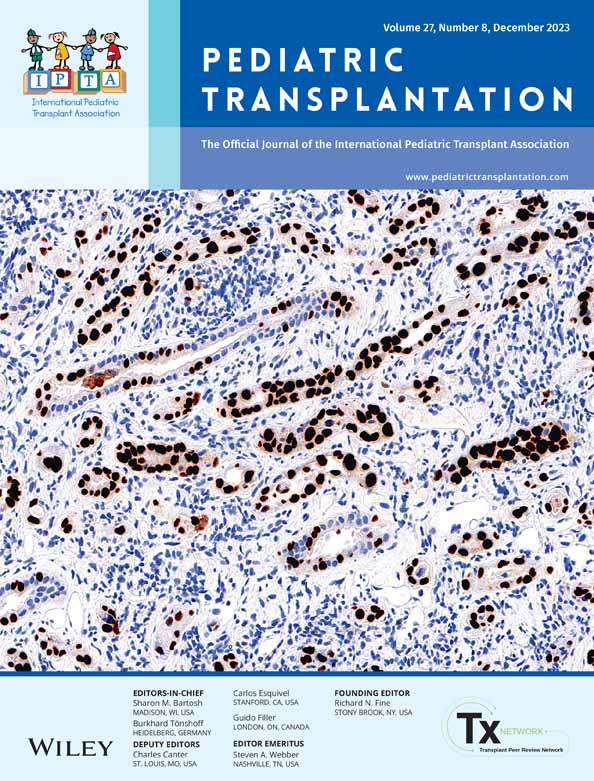Clinical course of post-kidney transplant Schimke immuno-osseous dysplasia
Abstract
Background
Schimke immuno-osseous dysplasia (SIOD) is a rare systemic disease characterized by short stature, proteinuria, and recurrent infections. Patients usually have spondyloepiphyseal dysplasia, and progressive steroid-resistant nephropathy that leads to kidney failure. However, their clinical course after kidney transplantation (KT) is not yet well known. Here, we present our experience with cases of SIOD treated at our institute.
Case Presentation
Since 2014, three children have been diagnosed with nephropathy resulting from SIOD. They presented with proteinuria in the nephrotic range at 7, 5, and 3 years of age. Focal segmental glomerulosclerosis was confirmed and progressed to kidney failure approximately 2 years after proteinuria was detected. These patients underwent living-donor KT from their parents. After KT, Case 1 lost his graft within 7 months due to multi-organ failure caused by disseminated adenovirus infection and died. Case 2 experienced graft failure 5 years after KT due to acute rejection from poor compliance. In Case 3, the allograft was still functioning 6 years after KT with low-dose tacrolimus single medication (trough level < 5 ng/mL). Extra-renal manifestations progressed regardless of KT, namely, right renal vein thrombosis and pulmonary hypertension in Case 1, severe bilateral hip dysplasia and Moyamoya syndrome in Case 2, and neutropenia and thrombocytopenia in Case 3, in addition to recurrent infection.
Conclusion
In SIOD patients, KT is complicated with recurrent infections due to their inherent immune dysfunction. Additionally, extra-renal symptoms may render the patients morbid despite the recovery of kidney function.
CONFLICT OF INTEREST STATEMENT
All of the authors have no conflict of interest to declare.
Open Research
DATA AVAILABILITY STATEMENT
All data relevant to the cases are included in the manuscript. No other data are available.




